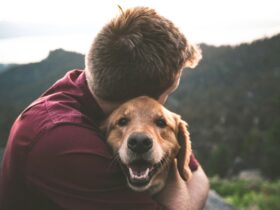Neutering is one of the most responsible choices you can make as a dog owner. It not only helps in controlling the pet population but also offers numerous health and behavioral benefits for your dog. However, deciding to neuter your dog can be overwhelming, especially if you’re unsure about what the procedure involves, its benefits, risks, and the recovery process. This guide aims to provide you with all the essential information you need to make an informed decision about neutering your dog.
What is Neutering?
Neutering, also known as castration in males and spaying in females, is a surgical procedure that removes a dog’s reproductive organs. In male dogs, the testicles are removed, while in female dogs, the ovaries and usually the uterus are removed. This procedure is performed under general anesthesia and is considered a routine surgery with minimal risks when done by a qualified veterinarian.
Why Neuter Your Dog?
1. Health Benefits
- Reduced Risk of Cancer: Neutering significantly reduces the risk of testicular cancer in males and ovarian and uterine cancers in females. It also lowers the chance of prostate problems in males and pyometra (a potentially life-threatening uterine infection) in females.
- Prevention of Overpopulation: Neutering helps control the pet population, preventing unwanted litters that contribute to the millions of dogs in shelters and rescues.
- Behavioral Improvements: Neutered dogs are often calmer and less aggressive. Neutering can reduce undesirable behaviors such as marking territory, mounting, and roaming in search of a mate.
2. Behavioral Benefits
- Decreased Aggression: Neutering can lead to a reduction in aggressive behaviors, particularly those related to mating, such as fighting with other males or displaying dominance.
- Reduced Roaming: Dogs that are not neutered have a strong drive to roam in search of a mate, which can lead to them getting lost or injured. Neutering reduces this urge, making your dog more likely to stay close to home.
- Improved Focus: Neutered dogs often have better focus and are more responsive to training, as they are less distracted by hormonal drives.
The Best Age to Neuter Your Dog
The timing of neutering can vary depending on the dog’s breed, size, and health. Generally, it is recommended to neuter dogs between six to nine months of age. However, some veterinarians suggest waiting until the dog has fully matured, especially for larger breeds, to avoid potential issues related to growth and development.
- Small Breeds: Small dogs mature faster and can often be neutered around six months of age.
- Large Breeds: Larger dogs take longer to mature, and some veterinarians recommend waiting until they are 12 to 18 months old to ensure their bones and joints have developed properly.
- Individual Considerations: Always consult with your veterinarian to determine the best time to neuter your dog, considering their specific needs and health status.
The Neutering Procedure: What to Expect
1. Pre-Surgery Preparation
- Fasting: Your dog will need to fast for several hours before the surgery to reduce the risk of complications during anesthesia.
- Health Check: A thorough health check, including blood work, may be performed to ensure your dog is fit for surgery.
- Anesthesia: General anesthesia will be administered to keep your dog pain-free and unconscious during the procedure.
2. The Surgery
- Incision and Removal: The veterinarian will make a small incision in the abdomen for females or near the scrotum for males, through which the reproductive organs are removed.
- Stitches: The incision is then closed with sutures or surgical glue, which may or may not need to be removed later, depending on the type used.
3. Post-Surgery Care
- Monitoring: Your dog will be closely monitored as they wake up from anesthesia. Most dogs go home the same day, although some may need to stay overnight for observation.
- Pain Management: Pain relief will be provided, and you may be given medication to administer at home.
- Rest and Recovery: Your dog will need to rest for several days, with limited activity to avoid straining the surgical site. An e-collar (cone) may be needed to prevent licking or chewing at the stitches.
Post-Neutering Care and Recovery
1. Home Care Tips
- Limit Activity: Keep your dog calm and restrict their movement for at least a week after surgery to ensure proper healing.
- Monitor the Incision: Check the incision site daily for signs of infection, such as redness, swelling, or discharge. If you notice any of these symptoms, contact your veterinarian immediately.
- Pain Management: Follow your veterinarian’s instructions for pain relief, which may include oral medications or anti-inflammatory drugs.
- Diet and Hydration: Offer your dog a light meal the evening after surgery, as anesthesia can sometimes cause nausea. Ensure they have access to fresh water at all times.
2. Behavioral Changes
- Temporary Changes: Some dogs may experience temporary behavioral changes post-surgery, such as lethargy or irritability. These usually subside within a few days as they recover.
- Long-Term Effects: Neutering can lead to positive long-term behavioral changes, such as reduced aggression and marking behaviors. However, it’s important to note that not all behavioral issues are resolved by neutering, and some may require additional training or behavioral therapy.
3. Follow-Up Care
- Veterinary Check-Up: A follow-up visit to the vet is usually recommended to ensure the incision is healing properly and to remove any stitches if necessary.
- Gradual Return to Normal Activity: After about two weeks, most dogs can gradually return to their regular activities, but it’s important to follow your vet’s advice on the timing.
Risks and Considerations
While neutering is a common and generally safe procedure, it’s important to be aware of potential risks and considerations.
1. Surgical Risks
- Anesthesia Complications: As with any surgery, there is a small risk associated with anesthesia. However, modern anesthetic techniques are very safe, especially when administered by a skilled veterinarian.
- Infection: Post-operative infections can occur if the incision site is not kept clean or if your dog licks the area excessively. Proper post-surgery care is crucial to prevent this.
2. Long-Term Health Considerations
- Weight Gain: Neutered dogs are more prone to weight gain due to a decrease in metabolism. It’s important to monitor your dog’s diet and exercise to maintain a healthy weight.
- Joint Issues in Large Breeds: Early neutering in large breeds has been linked to an increased risk of joint disorders. This is why some veterinarians recommend waiting until the dog is fully grown before neutering.
- Urinary Incontinence in Females: Spayed females may have a slightly increased risk of urinary incontinence, which can often be managed with medication.
Debunking Common Myths About Neutering
1. Myth: Neutering Changes a Dog’s Personality
- Fact: Neutering does not change a dog’s fundamental personality. It may reduce certain hormonally driven behaviors, but your dog will still be the same loving companion.
2. Myth: Neutering is Cruel
- Fact: Neutering is a humane procedure that can prevent serious health issues and improve your dog’s quality of life. It also helps reduce the number of unwanted pets.
3. Myth: Neutering Makes Dogs Fat
- Fact: Neutering itself does not cause weight gain. However, it does reduce a dog’s energy needs, so you may need to adjust their diet and exercise routine to prevent weight gain.
4. Myth: It’s Better to Let a Female Dog Have One Litter Before Spaying
- Fact: There is no scientific evidence to support this claim. In fact, spaying a female dog before her first heat cycle can significantly reduce the risk of mammary cancer.
Conclusion
Neutering your dog is a responsible and beneficial choice that can improve their health, behavior, and overall quality of life. By understanding the procedure, benefits, risks, and recovery process, you can make an informed decision that will help ensure your dog lives a long, healthy, and happy life. Always consult with your veterinarian to determine the best timing and approach for your specific dog, and don’t hesitate to ask questions or express any concerns you may have.











Leave a Reply